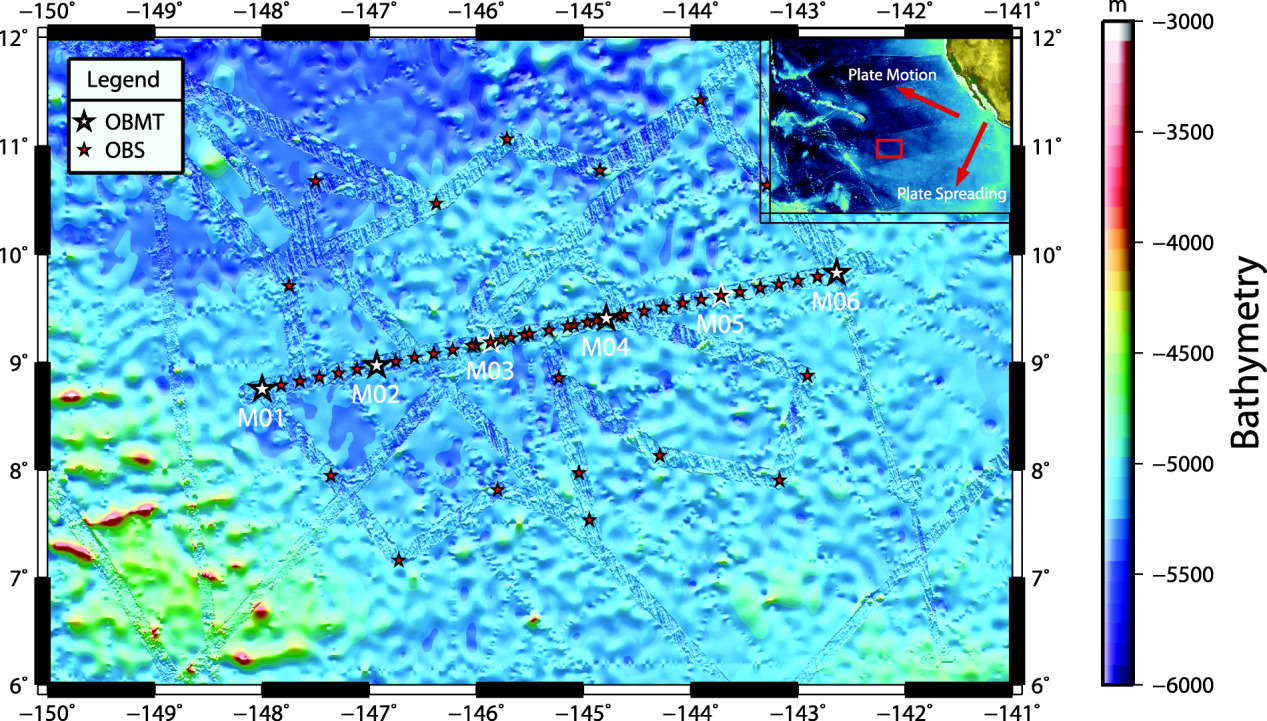NO MELT
The aim of the NOMELT experiment was to measure the structure of the oceanic lithosphere and the transition to the underlying asthenosphere in an area far away from any active tectonic influence. In this way, we aimed to understand the factors that control the formation and evolution of the lithosphere. The experiment featured the deployment of ocean bottom seismographs (OBS) and four MT stations. The MT data revealed an electrical model with an ~80 km thick resistive (>103 Ωm) lithosphere overlying a less resistive (~50 Ωm) asthenosphere. Our electrical model is consistent with a mostly dry lithosphere to 80 km depth. Estimated water contents support a model in which the rheological lithosphere is a result of dehydration during melting at a mid-ocean ridge with the asthenosphere remaining partially hydrated and weakened as a result. The MT data show no evidence for melt in the upper asthenosphere.

Shown is the region of the NoMelt experiment. White stars indicate MT stations. Red stars are seismic stations. (Image from E. Sarafian et al. 2015)
Collaborators
Primary Collaborators:
Emily Sarafian, Dan Lizarralde, John Collins (WHOI)
Jim Gaherty, (Northern Arizona University)
Greg Hirth, (Brown University).
Josh Russell, (Syracuse University)
Research Papers

